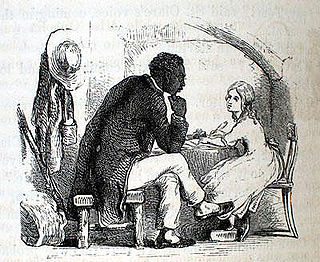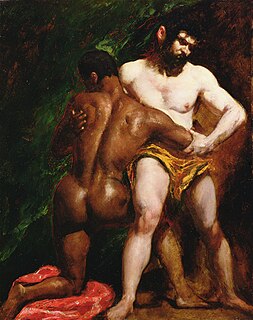 W
WAcculturation is a process of social, psychological, and cultural change that stems from the balancing of two cultures while adapting to the prevailing culture of the society. Acculturation is a process in which an individual adopts, acquires and adjusts to a new cultural environment. Individuals of a differing culture try to incorporate themselves into the new more prevalent culture by participating in aspects of the more prevalent culture, such as their traditions, but still hold onto their original cultural values and traditions. The effects of acculturation can be seen at multiple levels in both the devotee of the prevailing culture and those who are assimilating into the culture.
 W
WAnti-LGBT rhetoric are themes, catchphrases, and slogans that have been used against homosexuality or other non-heterosexual sexual orientations in order to demean lesbian, gay, bisexual, and transgender (LGBT) people. They range from the demeaning and the pejorative to expressions of hostility towards homosexuality which are based on religious, medical, or moral grounds. It is a form of hate speech which is illegal in countries such as the Netherlands, Norway, and Sweden.
 W
WCultural diversity is the quality of diverse or different cultures, as opposed to monoculture, the global monoculture, or a homogenization of cultures, akin to cultural decay. The phrase cultural diversity can also refer to having different cultures respect each other's differences. The phrase "cultural diversity" is also sometimes used to mean the variety of human societies or cultures in a specific region, or in the world as a whole.
 W
WImmigration is the international movement of people to a destination country of which they are not natives or where they do not possess citizenship in order to settle as permanent residents or naturalized citizens. Commuters, tourists, and other short-term stays in a destination country do not fall under the definition of immigration or migration; seasonal labour immigration is sometimes included, however.
 W
WInclusion, in relation to persons with disabilities, is defined as including individuals with disabilities in everyday activities and ensuring they have access to resources and opportunities in ways that are similar to their non-disabled peers. Disability rights advocates define true inclusion as results-oriented, rather than focused merely on encouragement. To this end, communities, businesses, and other groups and organizations are considered inclusive if people with disabilities do not face barriers to participation and have equal access to opportunities and resources.
 W
WIn the United States of America, majority-minority area or minority-majority area is a term describing a U.S. state or jurisdiction whose population is composed of less than 50% non-Hispanic whites. Racial data is derived from self-identification questions on the U.S. Census and on U.S. Census Bureau estimates.. The term is often used in voting rights law to designate voting districts which are altered under the Voting Rights Act to enable ethnic or language minorities "the opportunity to elect their candidate of choice." In that context, the term is first used by the Supreme Court in 1977. The Court had previously used the term in employment discrimination and labor relations cases.Six states are majority-minority as of July 2019: Hawaii, New Mexico, California, Texas, Nevada, and Maryland. The District of Columbia reached a majority-black status during the latter stages of the Great Migration. Although the district is still majority-minority, black people made up only 44.2% of the population in 2019. The shift has mainly been driven by an influx of Hispanics and non-Hispanic whites. Per the 2019 American Community Survey, the percentage of non-Hispanic white residents has fallen below 60% in Georgia (51.8%), Florida (53.0%), Arizona (54.0%), New Jersey (54.3%), New York (55.1%), Mississippi (56.3%), Louisiana (58.25%), and Alaska (59.8%). All populated United States territories are majority-minority; none of them have had a non-Hispanic white majority. As of 2012, 50 metropolitan areas in the U.S. are majority-minority. As of 2015, 12% of U.S. counties are majority-minority. The whole United States of America is projected to become majority-minority by the middle of the 21st century if current trends continue, making the U.S. the first major post-industrial society in the world where the dominant group transitioned from majority to minority. With alternate immigration scenarios, the whole United States is projected to become majority-minority sometime between 2041 and 2046. Ethnic minority children will make up the majority of children in the entire United States by 2020. Minority children are the majority among children in the following ten states: California, Nevada, New Mexico, Arizona, Texas, Florida, Georgia, Hawaii, Mississippi, and Maryland.
 W
WIn social science and politics, power is the capacity of an individual to influence the actions, beliefs, or conduct (behaviour) of others. The term authority is often used for power that is perceived as legitimate by the social structure, not to be confused with authoritarianism. Power can be seen as evil or unjust; however, power can also be seen as good and as something inherited or given for exercising humanistic objectives that will help, move, and empower others as well. In general, it is derived by the factors of interdependence between two entities and the environment. The use of power need not involve force or the threat of force (coercion). An example of using power without oppression is the concept "soft power", as compared to hard power. Much of the recent sociological debate about power revolves around the issue of its means to enable – in other words, power as a means to make social actions possible as much as it may constrain or prevent them.
 W
WRegulation 17 was a regulation of the Ontario Conservative government designed to limit instruction in French in French-language Catholic separate schools. It was a regulation written by the Ministry of Education, issued in July 1912 by the Conservative government of premier Sir James P. Whitney. It forbade teaching French beyond grade two in all Separate schools.
 W
WSettlers: The Mythology of the White Proletariat is a 1983 book by American theorist and activist J. Sakai that looks at the history of the United States of America from an anti-imperialist and non-white perspective. The book was influenced by Maoist thought, and has in turn influenced Third-Worldists, in particular Maoist–Third Worldists.
 W
WThe sociology of immigration involves the sociological analysis of immigration, particularly with respect to race and ethnicity, social structure, and political policy. Important concepts include assimilation, enculturation, marginalization, multiculturalism, postcolonialism, transnationalism and social cohesion.
 W
WThe sociology of race and ethnic relations is the study of social, political, and economic relations between races and ethnicities at all levels of society. This area encompasses the study of systemic racism, like residential segregation and other complex social processes between different racial and ethnic groups.
 W
WUncle Tom syndrome is a theory in multicultural psychology referring to a coping skill in which individuals use passivity and submissiveness when confronted with a threat, leading to subservient behaviour and appeasement, while concealing their true thoughts and feelings. The term "Uncle Tom" comes from the title character of Harriet Beecher Stowe's novel Uncle Tom's Cabin, where an enslaved African American, Tom, is beaten to death for refusing to betray the whereabouts of two other enslaved people.
 W
WThe Wrestlers is an oil painting on millboard by English artist William Etty, painted around 1840 and currently in the York Art Gallery, in York, England. It depicts a wrestling match between a black man and a white man, both glistening with sweat and under an intense light emphasising their curves and musculature. While little documentation of the painting exists prior to 1947, it is likely that it was painted over a period of three evenings at the life class of the Royal Academy.